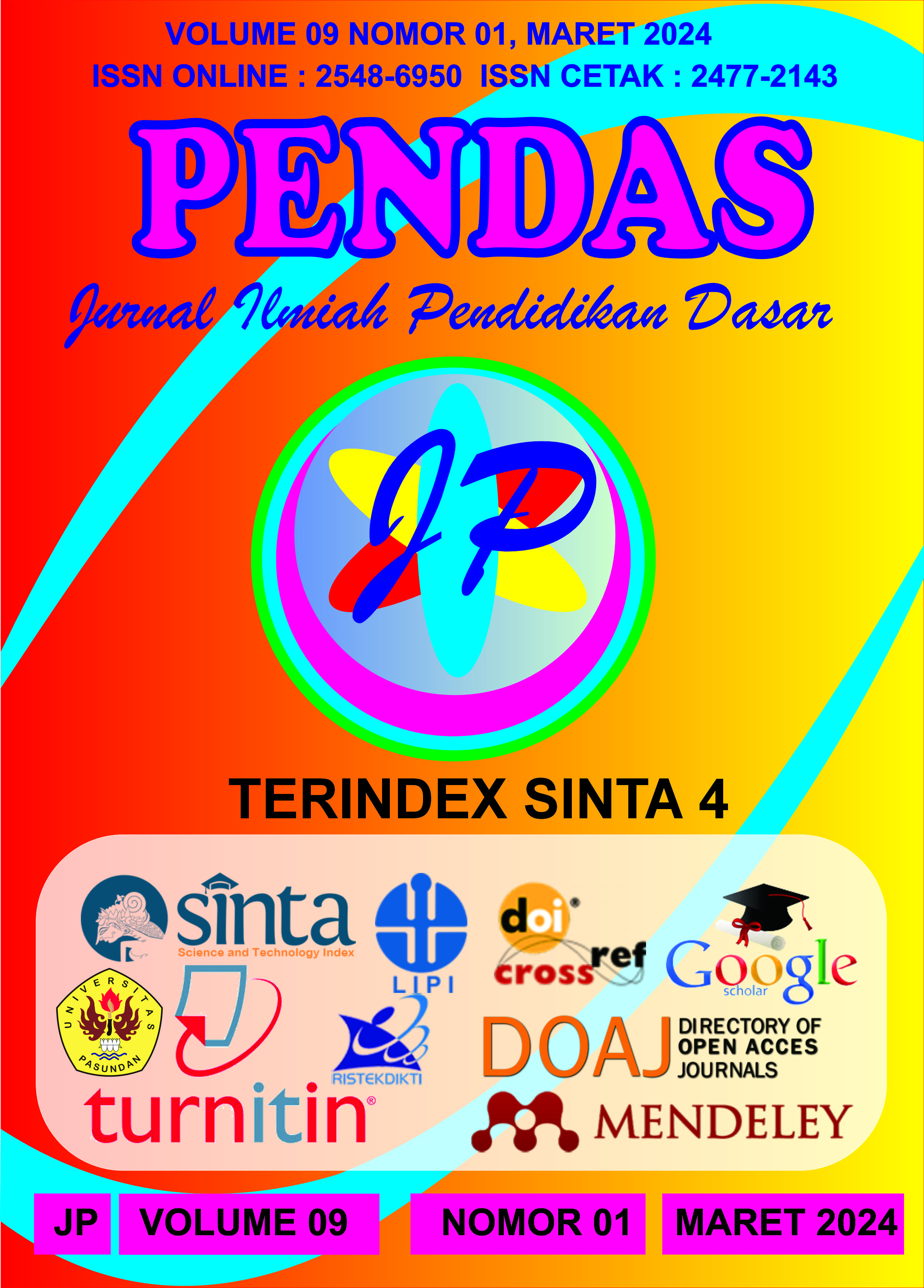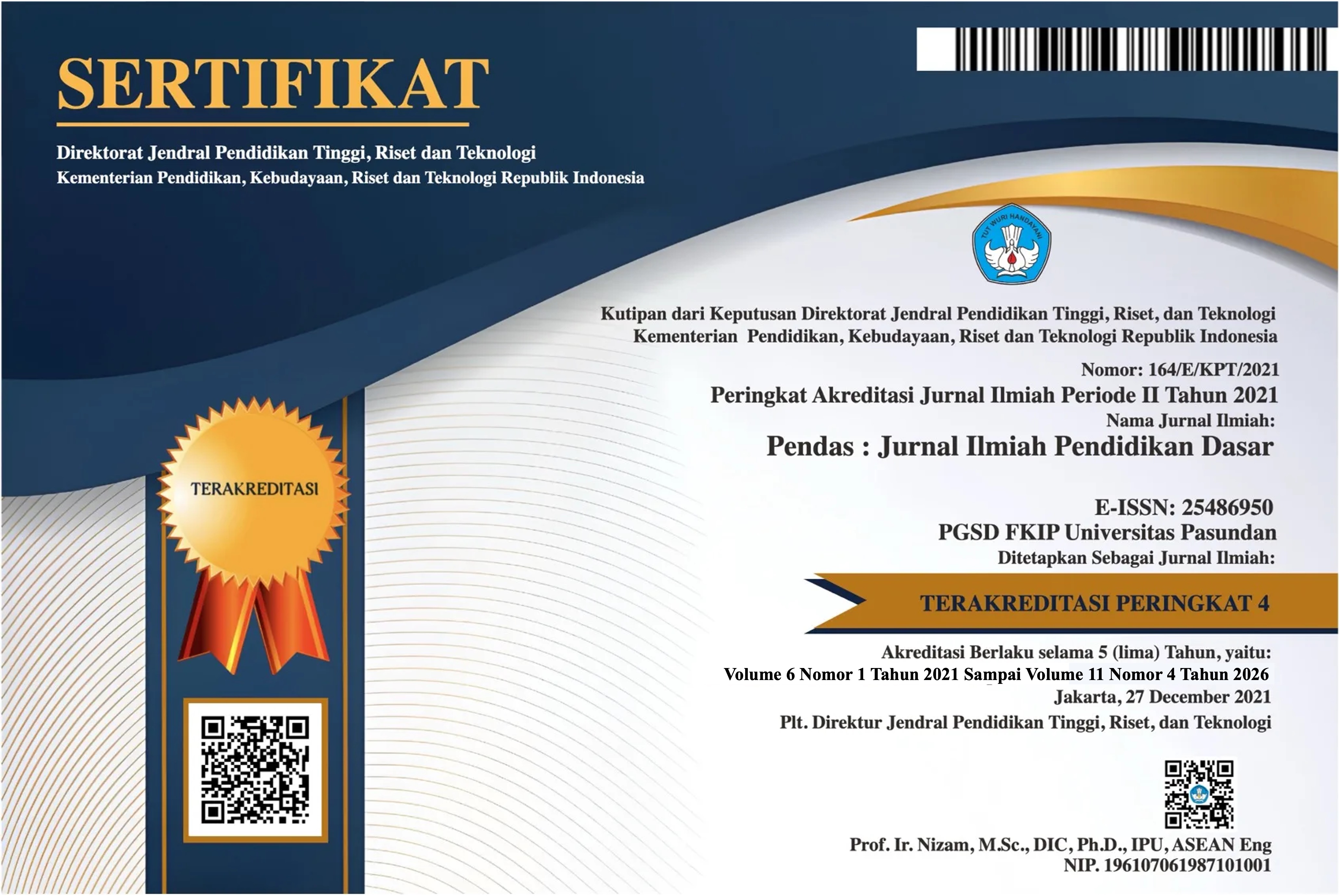ESTETIKA GERAK TARI KUDA LUMPING SEBAGAI EDUKASI KARAKTER UNTUK MELESTARIKAN BUDAYA LOKAL
DOI:
https://doi.org/10.23969/jp.v9i1.12281Keywords:
Kuda Lumping dance aesthetics, character education preserving local cultureAbstract
The Lumping Horse Dance is a folk dance in the Central Java area, specifically Purwosari Village, Kaliwiro District, Wonosobo Regency, it is a form of folk performing art using the property of a braided horse, namely a horse made of woven bamboo. The Kuda Lumping dance has a beauty value that can be seen, namely the beauty of movement as the main aspect of the dance. The beauty of the movements in the Kuda Lumping dance in Purwosari Village, Kaliwiro District, Wonosobo Regency can be seen through its basic aspects, namely space, time and energy. This research tells about the aesthetics of the Kuda Lumping Dance in Purwosari Village, Kaliwiro District, Wonosobo Regency. The aim of the research is to know, understand and describe the aesthetics of the Kuda Lumping dance movements in Purwosari Village, Kaliwiro District, Wonosobo Regency. This research uses a qualitative descriptive method, a choreographic aesthetic approach and an etic and emic approach. The data collection techniques used were observation, interviews and documentation. The data obtained was then analyzed using Janet Adshead's model theory. The data validity technique uses source triangulation. The research results are seen from the aspects of space, time and energy. The Kuda Lumping dance movements use a strong volume of movement, a fast movement tempo, and the use of movement accents in the footwork so that it gives a strong and energetic impression. Lumping Horse Dance movements tend to produce smooth, gentle movements, sometimes the movements are energetic, agile and also strong. Smooth and gentle movements can be seen in the movements of most horses. Meanwhile, strong, agile and energetic movements are found in Ndegar's movements.Downloads
References
Ahmad, H. A. (2018). The belief in the existence of supernatural beings in the community of Moslem Sundanese. Journal of Arts and Humanities, 7(4), 11-21. ://dx.doi.org/10.18533/journal.v7i4.1375
Alexandri, M. B., Maulina, E., Chan, A., & Sumadinata, R. W. (2019). Creative industries: Existence of arts traditional industries in Indonesia. Academy of Strategic Management Journal, 18(1), 1-12.
Djelantik, A.A.M. 1999. Estetika Sebuah Pengntar. Bandung: Masyarakat Seni Pertunjukan Indonesia
Kuswandi, & Maulana, S. (2014). Kesenian Kuda Lumping di Desa Banjaranyar Kecamatan Banjarsari Kabupaten Ciamis. Jurnal Artefak, 2(1), 91–92. Retrieved from https://jurnal.unigal.ac.id/index.php/artefak/article/view/1056
Murgiyanto, Sal. 1983. Koreografi. Jakarta: PT. Iklar Mandiri Abad _____________. 2002. Kritik Tari Bekal Dan Kemampuan Dasar. Jakarta: Ford
Sobali, Akhmad. (2017). “Nilai Estetika Pertunjukan Kuda Lumping Putra Sekar Gadung Di Desa Rengasbandung Kecamatan Jatibarang Kabupaten Brebes.” Jurnal Seni Tari 6(2):1–7.
Subandi. (2011). “Deskripsi Kualitatif Sebagai Satu Metode Dalam Penelitian Pertunjukan.” Harmonia 5(2):176. Foundation Dan Masyarakat Seni Pertunjukan Indonesia.
Jazuli, M. 2001. Metode-motode kualitatif. Semarang. Universitas negri semarang _______. 2008. Pendidikan Seni Budaya. Semarang: Unnes Press
Sumardjo, Jakob. 2000. Filsafat Seni. Bandung : ITB
Downloads
Published
Issue
Section
License
Copyright (c) 2024 Pendas : Jurnal Ilmiah Pendidikan Dasar

This work is licensed under a Creative Commons Attribution 4.0 International License.



















